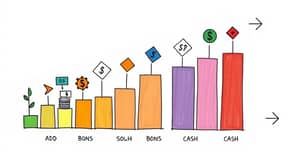
In today’s complex financial landscape, understanding how to place your investments across different account types can be the difference between average growth and extraordinary wealth accumulation. By focusing on the nuanced practice of asset location, you can minimize compounding tax drag and maximize after-tax compound returns over decades. This article will guide you through the principles, strategies, and real-world examples to empower you with actionable steps toward a more efficient portfolio.
Asset location is the strategic placement of investments among taxable, tax-deferred, and tax-free accounts to reduce the taxes you pay on gains, dividends, and interest. Each account type interacts with the tax code differently. Taxable accounts incur taxes on distributions and gains annually, while tax-deferred vehicles defer taxes until withdrawal, and tax-free vehicles eliminate eligible taxes entirely.
Taxes are a stealthy friction on your compounding power. Over time, paying higher taxes on interest or short-term gains can erode significant portions of your wealth. Research shows that a disciplined approach to asset location can yield annual after-tax boosts between 0.05–0.41 percentage points. By sheltering less efficient assets and exposing efficient ones, you enhance the compounding process and unlock long-term capital gains and qualified dividends at favorable rates.
To capitalize on tax rules, follow this structured process:
Below is a concise overview of optimal locations for common asset types based on their tax characteristics:
This table highlights core recommendations: shelter high-frequency, interest-generating assets while letting more efficient holdings grow in taxable vehicles.
Beyond location, consider these complementary strategies to further enhance your tax position:
Imagine a dual-income household with a 401(k), Roth IRA, and a brokerage account. By shifting bonds and REITs into the 401(k), moving high-growth technology stocks into the Roth IRA, and keeping index ETFs plus municipal bonds in the brokerage account, they align their portfolio with tax rules. Over a 30-year horizon, even a modest 0.05% annual return lift can translate into tens of thousands of extra dollars, illustrating how disciplined placement compounds into substantial wealth.
Certain nuances can further elevate results. High-growth or higher-volatility investments often benefit most from the tax-free growth potential of Roth IRAs. Before extensive reshuffling, factor in transaction and switching costs, potential capital gains triggers, and any state-specific tax implications for municipal bonds. Always align decisions with your risk tolerance and financial goals to avoid unintended portfolio drift.
Asset location is not a set-and-forget tactic. Tax laws evolve, account balances change, and personal situations shift. Conduct a comprehensive household-level portfolio analysis annually or after major life events. Utilize scoring tools and software to quantify how well your assets align with optimal locations and track improvements. Regular reviews empower you to adjust placements before inefficiencies erode future returns.
Implementing asset location can involve practical hurdles. Large existing portfolios may incur fees and capital gains taxes upon rebalancing. High-income investors might face Roth IRA contribution limits. Maintain flexibility: phase in changes over time to spread out tax impacts and explore backdoor Roth conversions if direct contributions are disallowed. Consulting a tax professional can provide personalized guidance and ensure alignment with evolving regulations.
Optimizing asset location marries the science of tax law with the art of strategic portfolio design. By thoughtfully placing each investment where it will face the most favorable tax treatment, you harness the power of compounding on a higher base. Start today by categorizing your holdings, reallocating inefficient assets, and setting up annual reviews. This disciplined approach can unlock significant long-term wealth potential and put you firmly in control of your financial destiny.
References













